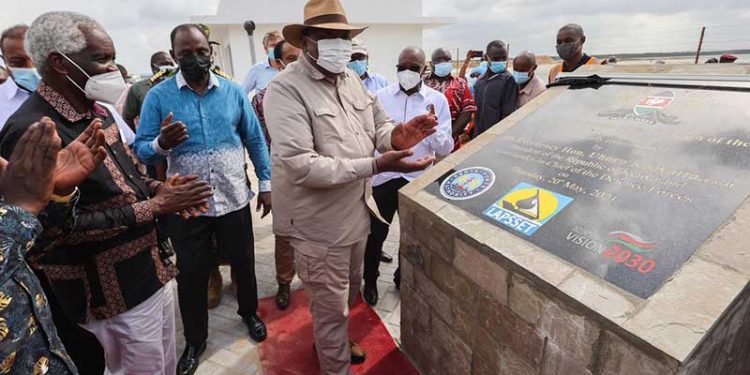Construction of the railway line to connect Lamu port with the other parts of the country, as the President Uhuru Kenyatta promised, and the proposed growth areas in the regions that Lamu Port South Sudan Ethiopia Transport (LAPSSET) will be the game changer for the corridor.
In almost a decade since the project was conceived, there has been a significant shift in the regional economies, where the corridor was supposed to serve mainly as a transit port- South Sudan and Ethiopia. With this shift, there is a need to be innovative to make the port profitable.
LAPSSET project was an immediate project for Ethiopia, which has over the years been seeking connections to more sea routes to reduce its over reliance on Djibouti ports.
A study carried out by the African Trade Policy Centre (ATPC) in 2009 showed that exorbitant charges incurred by Ethiopia at the Port of Djibouti had seen the landlocked East African country’s economy hit the doldrums. An alternative port looked like a great idea for the country.
According to a Lamu concept paper generated in 2008, the long-term solution to the Ethiopia transport problems lay in the construction of the second port in Lamu. Indeed, Ethiopia had completed the building of a good tarmac road from Addis Ababa to Moyale quite a while ago.
For South Sudan, several options of seaports to that country left Lamu port as the most convenient route. The considerations for this choice considered several factors including security, number of borders to crossing points, nature of the terrain, length of the route, accessibility to the West and East by sea.
South Sudan was expected to export crude oil. Traditionally, it has been doing so through a pipeline currently connecting the oil fields to the Red Sea at Port Sudan, a country it had been at war with for many years.
But things now look completely different because of significant developments in Ethiopia, the primary target market. When he took power, Ethiopia prime minister Abiy Ahmed forged a truce with Eritrea, an arch-rival player.
He struck a deal with President Isaias Afwerki that included restoring Ethiopian access to the ports of Massawa and Assab. Since Eretria gained independence in the early 90s, Ethiopia became a landlocked country, a move that had hampered its ambition to emerge as an economic and political powerhouse in the Horn of Africa.
Eritrea, a former province of Ethiopia, was the major port for Ethiopia until 1998 when the border conflict erupted. Ethiopia had been using Assab port, which is 887km northeast of Addis Ababa, as a major logistics hub.
Ethiopia has also put its focus on another port in Somaliland. With this new move, the Somaliland Port of Berbera will become the most modern port in the Horn of Africa this year when its first phase in completed.
DP World, a global port mega-operator, agreed to develop Berbera port and manage the facility for 30 years. Ethiopian’s government gained a 19% interest in the port project. The other partners in the project are DP World with a 51% share and Somaliland with a 30% share.
Port Berbera is now the closest sea route to Ethiopia, a journey of 11 hours. It has opened the route needed due for tremendous growth of the import and export, largely livestock and agriculture.
UAE based DP World Group port officials said that the port, which currently can handle 150,000 container port traffic- Twenty-Foot Equivalent Units (TEUs), is expected to expand into handling one million TEUs of 20 and 40-foot mixed units.
There have also been significant developments in Djibouti, which has also created the Djibouti International Free Trade Zone (DIFTZ). It has also expanded port capacity.
Doraleh Multipurpose Port, Port of Ghoubet and Tadjourah have all been completed in recent years. The Doraleh Port is strategically located, connecting Asia, Africa, and Europe. It can handle two and six million tonnes of cargo a year on its bulk terminal and breakbulk terminal, respectively.
Another key milestone for Djibouti port is SGR. A 750km SGR line connecting Addis Ababa with the port in Djibouti has since been constructed, cutting a three-day journey down to 12 hours. In an ambitious road-building program flagship projects include a 200km expressway connecting Hawassa, home to the country’s largest industrial park, with the capital in Addis Ababa.
Things have not been either good for South Sudan, which since independence from Sudan has faced numerous challenges. The government has struggled to build new governance institutions while dealing with low human and institutional capacity. It has not been able to diversify revenue streams as well as provide basic services to its population- half of whom are estimated to be illiterate and living below the poverty line.
To make port project profitable, opening up of the Northern regional counties will be crucial.





